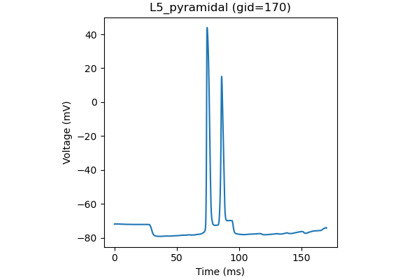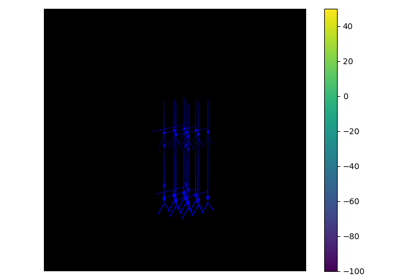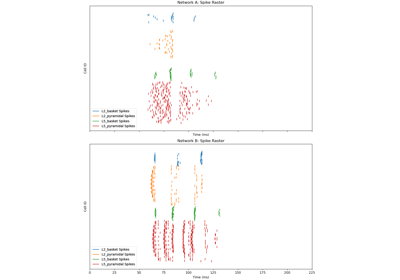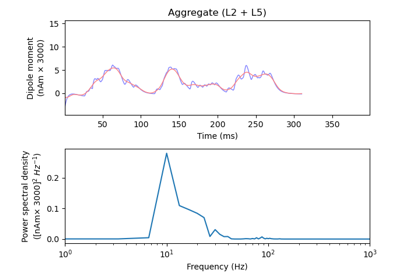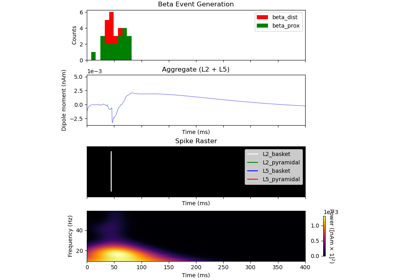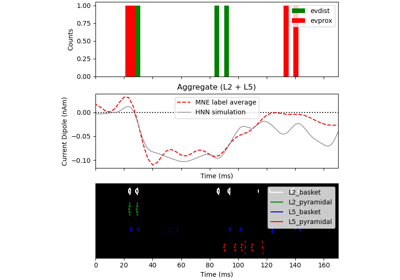hnn_core.simulate_dipole#
- hnn_core.simulate_dipole(net, tstop, dt=0.025, n_trials=None, record_vsec=False, record_isec=False, record_ca=False, postproc=False)[source]#
Simulate a dipole given the experiment parameters.
- Parameters:
- netNetwork object
The Network object specifying how cells are connected.
- tstopfloat
The simulation stop time (ms).
- dtfloat
The integration time step of h.CVode (ms)
- n_trialsint | None
The number of trials to simulate. If None, the ‘N_trials’ value of the
paramsused to createnetis used (must be >0)- record_vsec‘all’ | ‘soma’ | False
Option to record voltages from all sections (‘all’), or just the soma (‘soma’). Default: False.
- record_isec‘all’ | ‘soma’ | False
Option to record synaptic currents from all sections (‘all’), or just the soma (‘soma’). Default: False.
- record_ca‘all’ | ‘soma’ | False
Option to record calcium concentration from all sections (‘all’), or just the soma (‘soma’). Default: False.
- postprocbool
If True, smoothing (
dipole_smooth_win) and scaling (dipole_scalefctr) values are read from the parameter file, and applied to the dipole objects before returning. Note that this setting only affects the dipole waveforms, and not somatic voltages, possible extracellular recordings etc. The preferred way is to use thesmooth()andscale()methods instead. Default: False.
- Returns:
- dpls: list
List of dipole objects for each trials




